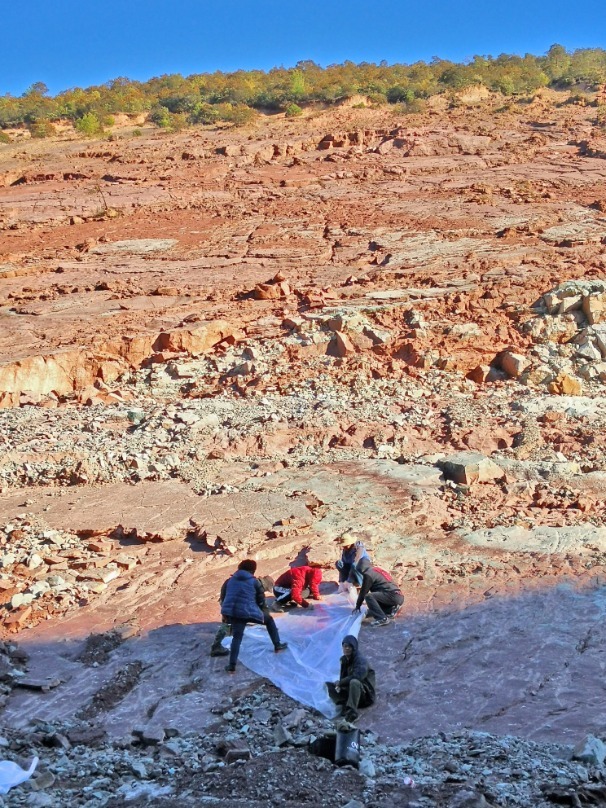

Paleontologists from home and abroad confirmed in a recently published essay that they have found the largest dinosaur tracksite ever discovered in China in Zhaojue, Sichuan province. The site covers an area of over 9,000 square meters, including at least 933 tracks.
The essay, co-written by Xing Lida, associate professor of China University of Geosciences, doctoral candidate Wang Miaoyan from CUG, Peng Guangzhao and Ye Yong, researchers from the Zigong Dinosaur Museum, Martin G. Lockley, professor at the University of Colorado Denver, and Hendrik Klein, dinosaur scholar from Germany, has been published on the international geological periodical Geoscience Frontiers.
Located in the middle of a copper mine in Zhaojue, these are arguably the most important tracksites in southwestern China, containing diverse sauropod, theropod, ornithopod and pterosaur track assemblages, researchers say in the essay.
The Zhaojue tracksites extend 1 kilometer from north to south, and span 0.5 km from east to west, consisting of four important track-bearing surfaces, numbered as I, II, IIN(north) and III, of which Zhaojue-I was first reported in 1994 and the others were sequentially discovered from 2012 to 2019.
The four tracksites contain a total of 1,928 tracks, covering an area of over 10,000 sq m, including the previously reported pterosaurs and theropod swim tracks.
Zhaojue-II experienced two exposures. In 2013, paleontologists found there the first dinosaur's swimming track discovered in China. The copper mining later increased the exposure of the tracksite so that it has been recognized as the largest dinosaur tracksite so far discovered in China.